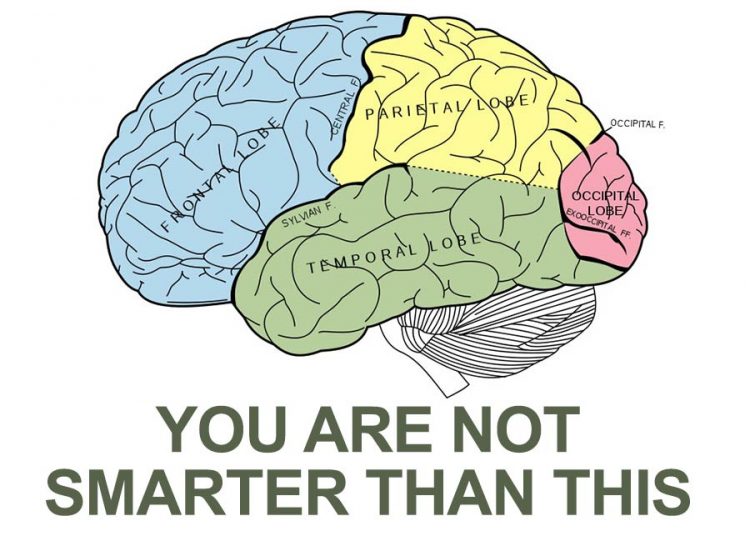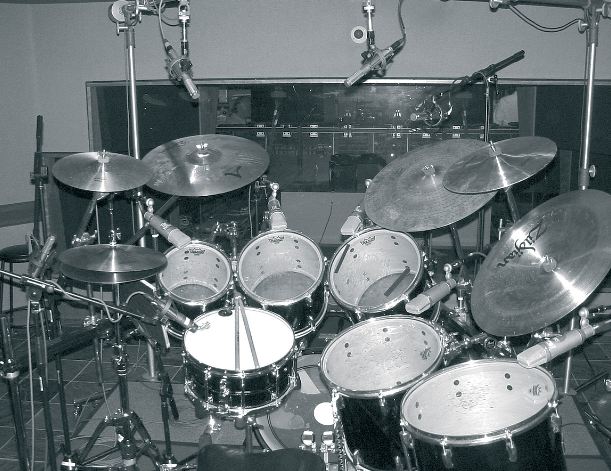Sing with emotion: the holy grail for vocalists. This is important practice for singers, but also for audio engineers and producers so you can coach while in session.

We get a lot of people asking for tips how to have emotion in their voice when singing, so here we go: to sing with emotion isn’t easy – especially you’re when stuck in a recording studio and are under the microscope. But vocal emotion is a lot more than just sounding sad. You need to be able to create many different emotions in music: sad, sexy, trepidatious, tense, happy, lonely… the list goes on an on. Successfully singing with emotion requires being aware of what actually happens in your body to shape sound. With smart muscle practice, a little acting, and committing to the meaning of the song, then you can steadily get more and more emotion in your singing voice.
… but it takes work. In this article I’m not giving you “5 easy ways to get more emotion in your voice”. Art isn’t that simple. If you want to be a singer – a real singer, not just someone seeking celebrity – you have to practice the art form. These tips will help you be aware of your body while singing, as well as aware of your body when you get emotional… and then combine the two experiences so you can sing with more emotion in your voice. It’s a skill just as much as a talent. If you’re not willing to put in the work, then stop reading here and find a job in a cubicle that requires wearing khakis and oxford shirts. Great singers practice and work hard.
Acting + body awareness to get more singing emotion
Emotion and giving a great vocal performance in the studio boils down to a combination of acting the song, and controlling from where you’re producing the sound in your body. When you sing, ask yourself: is the sound coming more in your chest, your throat, head, front or of back of your mouth? Those are but a small handful of “places” in your body that shape how your voice sounds.
But first, you need to start with the less technical aspect of singing: you need to feel what you’re singing — both the music and the lyrics. It sounds simple, but if you’re looking for answers why your signing doesn’t sound like it has enough emotion, the top reason on the list is usually “you’re not feeling it” (however cliché that might sound). Once you feel it, then you need to start paying attention to what’s happening in you body. Music is emotion, so you must start by feeling the emotion you want to relay into the microphone and onto tape.
So first, listen to the music and to the lyrics. Understand the song. Make a list of its emotions (I’m not kidding, write them down). Put them in order for which emotions you think are the easiest to show without speaking (facial expressions, body language, etc.). You can’t sing with emotion if you’re not first acknowledging the emotions you want to portray. A singer not knowing doing this work is like an actor going on state without every reading the script.
Don’t get locked into practicing just sad. You need to singing with lots of different emotions like: sad, longing, happy, sexy, whiny, lost, afraid, sassy, etc. Women singers: sexy and sassy are the easiest. Feel it first, sing it, and then take note of where the sound is coming from and how you’re shaping it – especially with vowel sounds. Guys, you can translate that into your best pick-up line “vibe” (confident, suave, swagger, etc.) and see what happens.
Sara Tavares is always good in the “soft and sultry” area. She can be a belter, too, so this track is a good example of how to sing with emotion in your voice both soft and loud. I also like this example because, in truth, she wasn’t necessarily born with a spectacular natural voice. Some lucky people are simply born with better and more interesting voice instruments than others, like Mayra Andrade or Zaz. However, the skill with which Sara Traveres “plays her instrument” makes up for what we might just call “merely a good singing voice” – her technique and ability to change the shape of her sound pushes her above others who might be born with great voices, but lack technique. A big part of emotion in a singing voice is that it allows the listener to visualize the singer. She’s good and at that aspect: putting imagery in her voice (i.e. can you tell if someone is smiling, closing their eyes, etc.). Listen how a lot of the visualization is also achieved by changing the vibrato pattern, or pausing longer before it kicks in (please, please never overdue your vibrato – it’s just annoying). She also allows a few well-placed cracks in the voice (NOT that constant raspy sound of teenage girl pop singers and Florida boy bands!). Vowels are also well-shaped by moving the sound around from throat to chest at certain points (that’s easier with romance languages than English, sadly). All these little things add emotional impact.
First: Sing Sassy and Sexy
Sassy and sexy emotions will boost your confidence because they’re the easiest. But do so by looking at your face and taking note of a couple things: the shape of your mouth, for example. Can you see your teeth and how much can you see (lip tension)? What is your jaw is doing (is it tense, stuck out, pulled in)? How about your shoulders and throat tension? All those muscle tensions are a result of your emotion and how your voice sounds; your tone. You absolutely cannot be a better singer if all you do is listen your your signing in your head while you’re doing it. You have to look, be aware, record and play back. Over and over again.
Use emotions that you CAN portray in your voice to teach yourself what your upper body is doing to create that vocal sound. A singer can’t just “be emotional”. You have to train yourself to control and recreate what the muscles in your body do when you are being naturally emotional. Vocal tone is all about muscles, tension, body shape and where the bulk of the sound is being created.
After you’ve taken a real serious look at how your body translates easier emotions so that your voice “sounds emotional” then you need to get a little bit into acting, or at least watch some sort of movie that’s going to make you cry – for real crying. Not tears from onions, I’m talking about proper crying, real emotion. (Gotta sacrifice for your art.) Once you get there, again, analyze your body: what muscles are tense and where, how much, and most importantly – your breathing.
This Heather Headley track is a good overall example when it comes to combining emotion with power. She started out on Broadway (or at least that’s where she first made a name for herself as far as I know). She’s an actress, so acting with her voice is something she knows how to do. The track production also helps this one a lot insofar as how it builds. With sad emotions in particular, your breathing dictates a lot of how you’re going to sound. Take your mental notes, watch something funny to cheer yourself up again, then try singing a sad song. Re-create some of that breathing and music tension – often times re-creating the physiological parts of “sadness” will help you actually be sad (like laughing will actually make you happier).
Punching / accenting words to give them more meaning is also an important tool. Jazz singers are usually brilliant at this. (Side note: if you’re a singer who is not listening to a lot of Jazz and early blues singers to learn your craft, then you’re not doing proper homework, and you’re not taking it seriously: get a cubicle job.) Watching and listening to a really good jazz singer can teach you a lot. This often gets lost when people sing, because they’re focussing more on the note, their vibrato, pitch, etc. Just like when you’re speaking, however, when singing, you have to push or pull back on words (accent, accentuate, emphasis) to help give them meaning with context of the sentence.
Practice singing with too much emotion first – over the top – so that you can get familiar with what your body is doing. Then you can pull back.
Continue working by simply making the keywords of the lyrics louder, punchier, or give them some swing. Tense up your belly to push out some extra air and make a word or note a bit louder. Then try to accent in reverse: quieter or more strained: clench your jaw a little, lose your breath. When I say louder I don’t mean scream like that brat from Linkin Park, and when I say quieter I don’t mean whisper. There are a hundred ways to push or pull back on a note. You have to practice. Mimic the greats until you understand how they physically sing, then use that knowledge to create your own style.
Now try singing something with an accent: French, Texan, British, whatever. I’m serious. The point of this is to pay attention to WHERE in your throat and mouth you are generating most of the sound. Physically feel and identify the specific locations and muscles used to shape vowels and the cadence required of different accents. It will help make you more aware of HOW you create notes and sounds on a physical level. You don’t have to practice this to make it sound good, you just need to practice it until you are aware of how the sound is changing due to the major physiological aspects I’ve mentioned already: throat and jaw tension, lip tension, cheeks, chest, where’s your adam’s apple, etc.
By now you should have a good idea of some general relationships between posture, cheek, throat, shoulder, jaw placement, and lip tension…
Now the hard part: forget about singing perfectly.
Get over the idea of perfection when singing in the studio. Stop it, throw it away. Spit away the bad voodoo and throw salt over your shoulder. Seeking perfection is the catalyst for the destruction of all magical performances. The best performances in history all have their faults.
 There is a massive battle for singers in the recording studio between technically having a perfect vocal performance and emotionally having a perfect vocal performance. Those two aspects of vocal recording are always in a battle. Great emotion will throw off your rhythm and intonation… but that’s sorta the point (again: think about how you breathe and that crazy quivering thing your lower lip does when you’re crying your eyes out…). Many of the best emotional recordings are technically imperfect because emotion made them that way. The imperfection created by emotion is what makes it great.
There is a massive battle for singers in the recording studio between technically having a perfect vocal performance and emotionally having a perfect vocal performance. Those two aspects of vocal recording are always in a battle. Great emotion will throw off your rhythm and intonation… but that’s sorta the point (again: think about how you breathe and that crazy quivering thing your lower lip does when you’re crying your eyes out…). Many of the best emotional recordings are technically imperfect because emotion made them that way. The imperfection created by emotion is what makes it great.
In 95% of all musical situations, an emotional performance should trump a technical performance. Music is about emotion, hence emotional singing wins in my book. So get over the under-the-microscope feeling. Get over the thought that you even might be “perfect”, let go, and let ‘er rip. Go over-the-top at first just to practice and how it sounds, then you can pull back. Laugh at yourself. Get comfortable and cry if you want to. You must get lost in the song – and being self-conscious about the technical aspects of your singing prevents that from happening. Once you practice a few hundred hours and get better at singing with emotion by “acting emotion” – then you can shift the performance balance back a little bit to the technical… but you MUST let it all go first to train your body and voice how to do it. It’s like love: to achieve it, you gotta let go – sing like no one’s watching.
Published: by | Updated: 11-19-2016 08:30:57





















